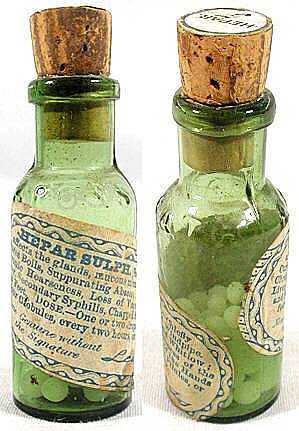Ben Goldacre at The Amaz!ng Meeting (VIDEO)
- Details
- Written by JREF Staff
- Category: Latest JREF News
- Hits: 4750
In 2008, the Amaz!ng Meeting 6 took on the theme “I, Skeptic”, exploring the role skeptics play in the modern, digital age. In this video from our archives, Dr. Ben Goldacre of BadScience.com chronicles his experiences arguing against the pseudoscience of homeopathy both in and out of the media.
You can check out JREF's other videos from The Amaz!ng Meetings, which have been viewed nearly 1.5 million times since we started making them available online for free, at YouTube.com/JamesRandiFoundation.
Teaching Chemistry With Homeopathy
- Details
- Written by Kyle Hill
- Category: Swift
- Hits: 21585
As much as it riles up proponents of science-based medicine like myself, homeopathy can be a great teaching tool. But most of the time this opportunity is squandered.  Articles, lectures, papers, and talks critical of homeopathy quickly skip over the chemistry and the math that makes the philosophy so implausible. “The molar limit,” is casually thrown out as the smoking gun, but guessing that most people haven’t had a chemistry class after high school, this is potentially as bad as simply stating, “Water has memory.” What is more important is the why, the how, and of course the math.
Articles, lectures, papers, and talks critical of homeopathy quickly skip over the chemistry and the math that makes the philosophy so implausible. “The molar limit,” is casually thrown out as the smoking gun, but guessing that most people haven’t had a chemistry class after high school, this is potentially as bad as simply stating, “Water has memory.” What is more important is the why, the how, and of course the math.
I believe that you won’t get at an entrenched audience simply sounding the bulls**t claxon; you have to build upon the scaffolding most people already have, and work your way up to the skeptical position. In communication research, this is called schema theory, and it predicts that new information is best understood when you have some prior framework to understand it with.
As Phil Plait said, “If you teach a man to reason, he will think for a lifetime.” Likewise, I believe that if you teach someone the reason why homeopathy can’t work, it is much more powerful. To that end, and just in time to dovetail with Steven Novella’s homeopathy debate, I aim to provide a neutral explainer below focusing on chemistry of homeopathy’s main claim—high dilution equals high potency.
So what is the molar limit? What is Avogadro’s number? We have to start with the basics.
Avogadro’s Number
In the early 19th century Italian scientist Amedeo Avogadro proposed the idea that the volume of a gas is proportional to the number of molecules or atoms in that gas, regardless of its state (temperature, pressure, etc.). Fill a balloon with a liter of helium, as the theory goes, and you would be able to figure out how many helium atoms are inside.
This formed the basis for the mole; a unit describing how many elementary particles (molecules, atoms, or ions) are in some standard amount of stuff. That standard was made to be exactly 12 grams of carbon-12 (a form of carbon with 6 protons and 6 neutrons). So, one mole of carbon-12 equals 12 grams.
The Xhosa Prophecy
- Details
- Written by Dr. Romeo Vitelli
- Category: Swift
- Hits: 20295
How dangerous can a prophecy be? And what happens to a prophet who turns out to be wrong? The story of Nongqawuse and the prophecy that led to the deaths of thousands of her fellow Xhosa in the mid-19th century is an important morality despite being so little known outside of South Africa.
Even in the early days of British colonialism in southern Africa, the various tribes that made up the Xhosa nation were one of the largest ethnic groups in what would eventually become the Eastern Cape Province of the Republic of South Africa. Though apartheid policies still lay in the future, the Xhosa were largely shut out of most businesses and depended on their cattle herds and crops for food and trade. Despite a major outbreak of cattle lung sickness that had struck the Xhosa cattle herds between 1855 and 1856, the economic disaster that would devastate Xhosa society came from another direction entirely.
Susan Gerbic And Wikiskepticism
- Details
- Written by DJ Grothe
- Category: Swift
- Hits: 10179
As readers of randi.org will know, a lot of great skeptical activism gets carried out by hard working volunteers on a regular basis. Sometimes it is as simple as challenging misinformation on the net, as JREF fellow Tim Farley has spoken about. An example of this sort of work is Susan Gerbic’s project over the last couple of years to organize volunteers to clean up Wikipedia when it comes to skeptical and paranormal topics.
She recently organized a cleanup of JREF fellow Leo Igwe’s page. She shares with randi.org a writeup of recent progress:
This Week In Doubtful News
- Details
- Written by Sharon Hill
- Category: Swift
- Hits: 7255
Some people had a really bad week. Dr. Oz finally gets called out for bad advice. But, honestly, this guy might have known better.
A chicken laid a huge and very weird egg. Ouch.
Even lawyers fall for the Nigerian scam.
Page 64 of 408